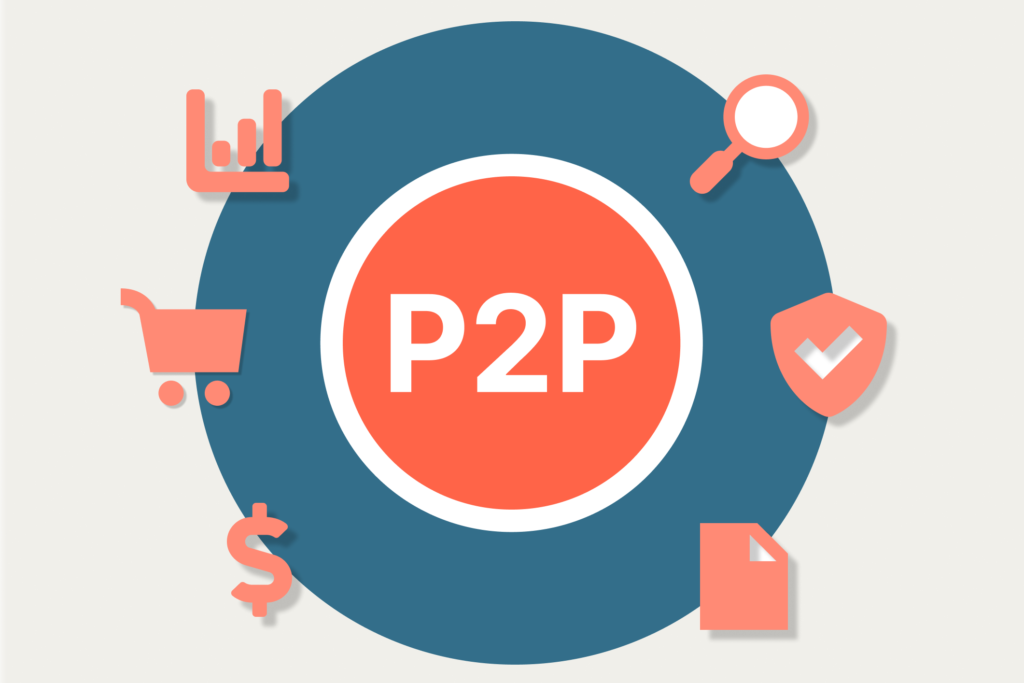Businesses are increasingly turning to automation to streamline their processes. One of the most critical areas where automation is making a significant impact is the procure-to-pay (P2P) process. Procure-to-pay involves managing the entire lifecycle of procurement, from sourcing suppliers to paying for goods and services. As businesses scale, manually handling these processes can lead to inefficiencies, errors, and delays, all of which can negatively impact profitability and vendor relationships.
This is where P2P software comes into play. By automating procurement processes, organizations can improve efficiency, reduce costs, and ensure better compliance with regulatory standards. But how exactly does P2P software improve the procure-to-pay process? Let’s dive into the details.
What Does Procure-to-Pay Software Do?
P2P software is a comprehensive tool that facilitates and automates the complete procurement lifecycle. It connects the procurement function to the accounts payable team to ensure that goods or services ordered are received, invoiced, and paid for in a seamless, automated fashion. The software typically integrates with other systems, such as ERP (Enterprise Resource Planning) or best business process management systems, to create a centralized hub for all procurement activities.
The core functions of P2P software include:
Supplier management: Managing supplier information and maintaining supplier relationships.
Purchase requisition: Automating the process of creating and approving requisitions.
Purchase order generation: Generating and sending purchase orders to suppliers.
Invoice management: Automating the receipt and processing of invoices.
Payment: Ensuring timely and accurate payment to suppliers.
Key Benefits of P2P Software for the Procure-to-Pay Process
1. Streamlined Procurement Workflow
One of the primary benefits of P2P software is the ability to streamline the procurement workflow. The software automates many of the manual tasks involved in procurement, such as creating purchase orders, tracking shipments, and processing invoices. By doing so, businesses can eliminate redundancies and reduce the amount of time spent on procurement-related tasks. This leads to faster processing times and improved operational efficiency.
Additionally, integrating P2P software with a best business process management system ensures that all processes are standardized and consistently followed. This reduces the risk of errors, such as duplicate payments or incorrect purchase orders, which can be costly for businesses.
2. Enhanced Visibility and Control
P2P software provides organizations with complete visibility over their procurement process. This visibility allows procurement teams to monitor the status of orders, track supplier performance, and identify potential bottlenecks. It also provides real-time insights into spending patterns, helping organizations make more informed purchasing decisions and optimize their procurement strategy.
Having a centralized platform where all procurement activities are tracked ensures that nothing falls through the cracks. The finance and procurement teams can access real-time data, reducing the chances of miscommunication and enabling better decision-making across the organization.
3. Improved Compliance and Risk Management
Procurement processes must comply with various regulatory and organizational policies. Manually ensuring compliance can be time-consuming and prone to errors. What does procure-to-pay software do in this scenario? It automates compliance checks, ensuring that all procurement activities adhere to the company’s policies and relevant regulatory requirements.
P2P software helps enforce pre-defined rules and standards for every transaction. For instance, it can automatically flag non-compliant purchases or alert the procurement team to potential risks, such as unauthorized purchases or supplier contracts that are about to expire. This proactive approach helps businesses manage risks more effectively, ensuring smooth procurement operations.
4. Cost Savings Through Better Spend Management
Cost savings are one of the biggest advantages of implementing P2P software. The software helps reduce procurement costs by enabling better spend management. By consolidating procurement activities into a single platform, businesses can negotiate better deals with suppliers, take advantage of bulk purchasing, and avoid over-ordering or under-ordering.
Moreover, the automation of the procure-to-pay process reduces the need for manual labor, leading to savings in operational costs. The software also identifies maverick spending—when employees make purchases outside of the approved procurement process—and enforces compliance, further controlling costs.
5. Improved Supplier Relationships
A healthy relationship with suppliers is crucial for ensuring timely deliveries, favorable terms, and continued collaboration. P2P software makes it easier to maintain and improve supplier relationships by providing a transparent and structured procurement process. Suppliers receive clear and accurate purchase orders, and payments are made promptly, which builds trust and fosters long-term partnerships.
The software also tracks supplier performance, allowing businesses to evaluate their suppliers based on metrics like delivery times, product quality, and pricing. This data can be used to reward top-performing suppliers or renegotiate contracts with underperforming ones.
Integration with Business Process Management Systems
For many organizations, P2P software works in conjunction with a best business process management system (BPM). A BPM system helps manage and optimize end-to-end business processes by defining workflows, automating tasks, and tracking performance. Integrating P2P software with BPM creates a powerful tool that enhances operational efficiency across multiple departments.
For example, when a purchase requisition is created, it can automatically trigger approval workflows based on pre-defined rules. Once approved, the requisition can flow seamlessly into the purchase order process, where it is sent to the supplier and tracked until fulfillment. This integration eliminates manual handoffs, ensuring that the procurement process runs smoothly and without unnecessary delays.
Key Features of P2P Software
To fully understand what does procure-to-pay software do, it’s important to explore its key features:
Automation of Purchase Orders: Automatically creates and sends POs to suppliers, reducing manual work and potential errors.
Invoice Matching: Matches purchase orders with invoices to ensure consistency and accuracy before payment.
Spend Analytics: Provides insights into spending patterns, allowing businesses to identify cost-saving opportunities.
Approval Workflows: Automates the approval process for requisitions, POs, and invoices based on pre-set rules.
Supplier Portal: Enables suppliers to submit quotes, invoices, and track payments in real-time, improving collaboration.
The Future of Procure-to-Pay Automation
As businesses continue to grow and expand their procurement activities, the need for advanced P2P solutions will only increase. Future innovations in P2P software will likely focus on enhanced AI-driven analytics, more intuitive user interfaces, and deeper integration with business process management systems.
These advancements will allow businesses to further streamline their procurement processes, optimize their spending, and improve supplier relationships. Additionally, as regulatory requirements continue to evolve, P2P software will play a critical role in ensuring compliance and managing risks.
Conclusion
P2P software offers a comprehensive solution to the challenges of managing the procurement lifecycle. By automating and optimizing the procure-to-pay process, businesses can improve efficiency, reduce costs, and enhance supplier relationships. Furthermore, the integration of P2P software with a best business process management system allows businesses to standardize and streamline their operations across departments, ensuring compliance and reducing risks. As procurement becomes increasingly complex, investing in P2P software is a smart move for organizations looking to stay competitive in a digital world.
In summary, what does procure-to-pay software do? It transforms an organization’s procurement process from a manual, error-prone system into an automated, efficient workflow that improves visibility, control, and savings across the board.



